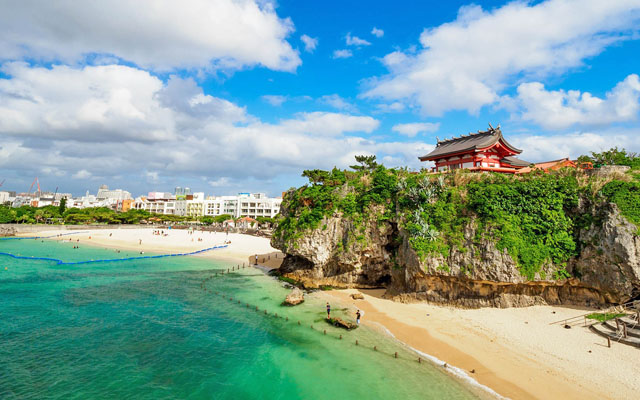Trip.com Singapore general manager Edmund Ong discusses Singapore’s evolving tourism landscape, highlighting how innovation, sustainability, and strategic events are shaping the city-state’s growth, building talent, and enhancing visitor experiences ahead of its next phase of expansion
 Singapore’s tourism industry is at a pivotal moment. 2024 saw record receipts of S$29.8 billion (US$21.7 billion), with that number further projected to hit S$50 billion in the next 15 years, the city is now undergoing a bold transformation – evolving from a destination known for its iconic cityscapes into one that continually reinvents itself to attract travellers looking for fresh, premium experiences.
Singapore’s tourism industry is at a pivotal moment. 2024 saw record receipts of S$29.8 billion (US$21.7 billion), with that number further projected to hit S$50 billion in the next 15 years, the city is now undergoing a bold transformation – evolving from a destination known for its iconic cityscapes into one that continually reinvents itself to attract travellers looking for fresh, premium experiences.
To shape its next chapter of tourism growth, Singapore is doubling down on innovation, sustainability, and partnerships, while ensuring that same growth continues to benefit both people and planet. This means going beyond building robust infrastructure to cultivate talents, deepen collaboration, as well as utilising tourism as a strategic tool to continue building the Singapore brand.
From transit hub to destination of choice
Over the past two decades, Singapore has transformed from a transit hub into a vibrant destination for immersive travel. The introduction of the Formula 1 night race in 2008 was a turning point, showcasing the city to a global audience and redefining its image as a cosmopolitan centre for business, culture, and entertainment. Today, Singapore is home to a dynamic calendar of concerts, festivals, and international sporting events that attract visitors from around the world.
This momentum is supported by a robust pipeline of infrastructure projects. The upcoming Terminal 5 at Changi Airport and the expansion of the Marina Bay Cruise Centre will enhance connectivity, while new entertainment venues including the Immersive Media Theatre at Gardens by the Bay and Marina Bay Sands’ 15,000-seat arena, will further elevate Singapore’s appeal as South-east Asia’s premier hub for live events.
Attracting major events to shore up tourism demand during lull seasons
Like most global markets, Singapore’s tourism industry experiences peaks and troughs throughout the year. Entertainment and MICE events are an opportunity to smooth out these fluctuations. By scheduling major events during traditionally inbound tourism lulls, Singapore can attract visitors with more competitive rates, helping to combat the perception of being an expensive city while ensuring hotels and airlines maintain healthy occupancy and load.
This approach is a win-win for all. Travellers benefit from better value, while the industry fills rooms, seats, and venues that might otherwise lay idle. More importantly, these events contribute to Singapore’s evolving brand as a destination that offers not just business efficiency, but also cultural richness, entertainment, and culinary excellence. This brand-building effect encourages not only first-time visits but repeat tourism turning one-time attendees into long-term fans and ambassadors.
Building the foundations for sustainable growth
To fully realise this vision, Singapore needs to address four key areas that will shape the future of its tourism sector.
1. Building and empowering a skilled tourism workforce
Singapore’s new facilities and elevated offerings demand a workforce that can deliver consistently exceptional service. As traveller expectations rise, the human touch becomes a critical differentiator.
Investments in hospitality education and upskilling are therefore essential. Partnerships with leading institutions can nurture a pipeline of talent equipped to meet the needs of modern travellers. Incentives for career progression and service excellence will also be key to attracting and retaining top professionals. By fostering a culture of lifelong learning and professional pride, Singapore can ensure that every visitor experience reflects its commitment to quality.
2. Differentiation in a competitive region
Across Asia, cities like Bangkok and Tokyo are stepping up their tourism game with new attractions and luxury offerings. To stand out, Singapore must focus on what makes it unique.
This includes curating signature events that showcase its multicultural heritage, embracing sustainability through eco-tourism initiatives, and leveraging technology to create seamless, personalised travel experiences. Hyper-local experiences such as neighbourhood food tours, community-led workshops, and heritage trails can offer travellers a deeper connection to the city and its people.
Singapore’s strength lies in its ability to blend innovation with authenticity. By doubling down on this formula, it can continue to attract discerning travellers seeking meaningful and memorable journeys.
3. Deepening industry ecosystem for heightened growth
Tourism is not a solo endeavour, it’s an ecosystem. Collaboration between companies and across sectors is essential to deliver integrated, resilient, and innovative experiences.
Singapore can lead by fostering partnerships between airlines, hotels, tech platforms, and local communities. Joint marketing campaigns, integrated booking systems, and shared sustainability standards can help create a more cohesive and compelling tourism offering. Public-private taskforces can also play a role in aligning goals and driving coordinated action across the industry.
By working together, stakeholders can unlock new opportunities and ensure Singapore remains agile in the face of global shifts.
4. Making tourism sustainable and inclusive for all
Finally, long-term tourism growth must be inclusive and environmentally responsible. Singapore has already made strides in this area, but there is room to go further.
Setting ambitious sustainability targets, such as expanding green certification for venues and incentivising low-carbon travel, will help position Singapore as a leader in responsible tourism. Supporting local businesses and community-based tourism initiatives can ensure that growth benefits all segments of society. Accessibility must also be prioritised, so that Singapore remains welcoming to travellers of all backgrounds and abilities.
By embedding sustainability and inclusivity into every aspect of its tourism strategy, Singapore can ensure that its success is both enduring and equitable.
A shared vision for the road ahead
Singapore’s tourism story is one of transformation, ambition, and resilience. But the next chapter will require more than infrastructure. It will demand bold ideas, strategic collaboration, and a deep commitment to people and planet. By investing in talent, differentiation, and sustainability, and by using events to balance demand and build brand equity, Singapore can set a new global standard for tourism.

















